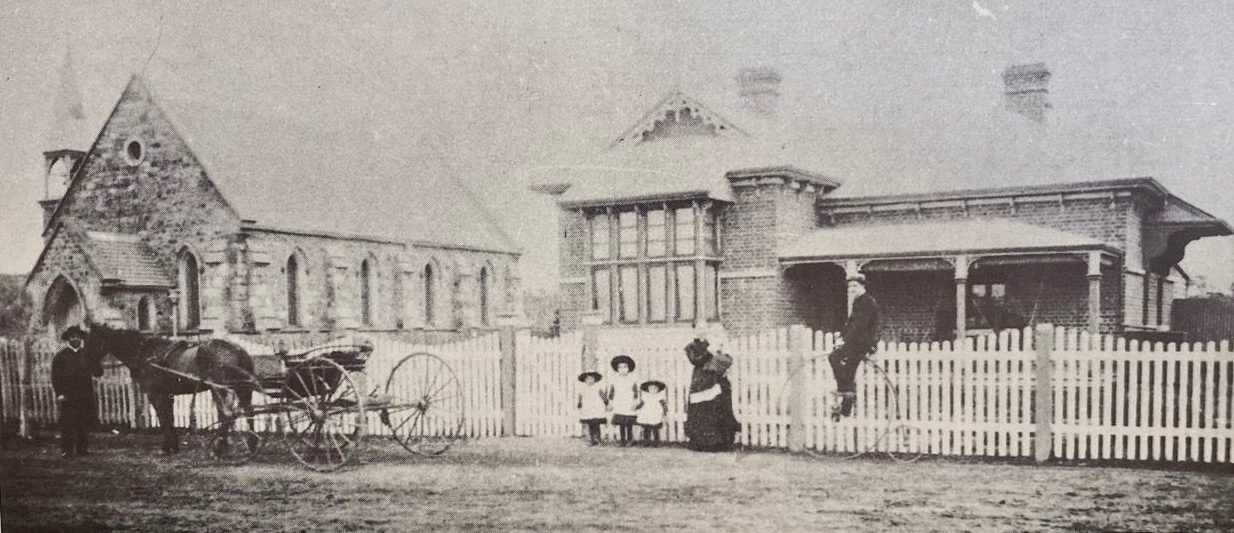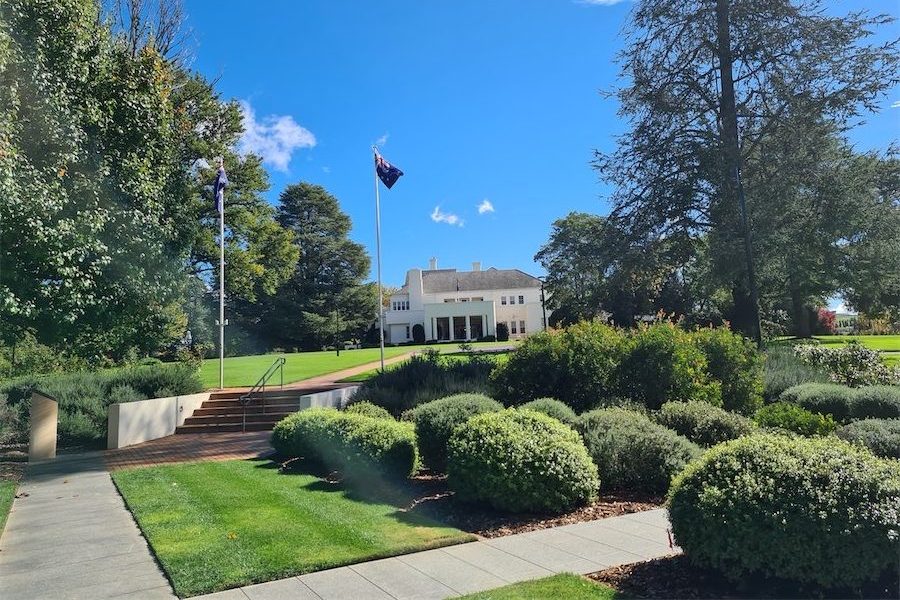
It was a “kilt-wearing occasion” 150-years ago today when the unadorned timber doors of the coppery-coloured stone church opened to all comers as a rather rare Presbyterian “kirk” in the Canberra region, writes Yesterday’s columnist NICHOLE OVERALL.

With its gothic features and a spire now shadowed by towering cypress “cemetery trees”, when St Stephen’s was welcomed by the community on March 8, 1874, it occupied a bare paddock at the edge of Queanbeyan’s primary centre.
Looking out to a substantial Town Park established at a similar time, it bore a resemblance to the mortuary railway stations of Sydney’s “city of the dead”, Rookwood – to which it’s obscurely linked.
The House of God intended as a “sister lighthouse… to guide to the port of eternal life and glory” was the fourth in Queanbeyan itself, 30 years after the Anglicans offered safe harbour for a growing flock with their first Christ Church positioned beside the town’s river.
Pastor Robert McMullan, St Stephen’s newest minister, having arrived from Northern Ireland in September, 2022, says he was surprised to learn that while Presbyterians were some of the earliest Christians to arrive on the Limestone Plains, it was a battle to gain a foothold.
“It’s so interesting to hear that they were sparse in number and dedicated places of worship were few,” he says.
“In my small hometown, we had seven Presbyterian churches!”
The paucity was partly a reflection of simmering “religious tension” inflamed by mercurial leading figure and later politician, John Dunmore Lang, a regular visitor to the district.
In 1862, an aggrieved Lang reminded that while Robert Campbell of Duntroon was Presbyterian, his largesse had benefited the Anglican St John’s in Canberra (1844).
“Obviously, many of those involved in the early church in this area were not well off, so it was a significant achievement to raise funds,” says Pastor McMullan.
“It is inspiring to know that despite challenges, the community rallied to create churches at Lyneham (St Ninian’s) and Gundaroo from the mid-1860s.”
St John’s at Bungendore was added in 1876, demolished a decade later for the arrival of rail. And 60 years would pass before Canberra had the imposing St Andrew’s cathedral, 2024 marking its 90th anniversary.
The existential struggle was in evidence at St Stephen’s inaugural ceremony: windows yet to be filled with stained glass were covered with calico, benches had to be borrowed from the courthouse and Methodist Church (1860), and the consecrated grounds were enclosed by a makeshift timber fence.
Nonetheless, the strength of community in Queanbeyan again prevailed.
School master Dr Andrew Morton, a prime mover of the parochial movement, was persuasive in encouraging much-needed donations.
In another quirk for this kirk (Scottish for church), it was the local, long-serving Church of England rector, Alberto Soares – Parisian-trained artist and engineer – who designed the Presbyterian addition; out of some 35 ecclesiastical buildings he was involved with, unique for Soares.
Another of his works to open in the same year and an echo of this ecumenical effort, Carwoola’s St Thomas on the Captains Flat Road – celebrating its 150th anniversary in November.
On St Stephen’s big day, 200 attendees packed the pews, those to address them including influential townsman, former Methodist minister and Queanbeyan Age editor, John Gale.
Most captivating for the audience though was the eloquent Rev Robert Steel, minister of the namesake of Queanbeyan’s church, St Stephen’s in Sydney.

In another moment of serendipity, it would be the good reverend’s handsome, dark-haired son, the Rev Robert Alexander Steel, who’d become beloved of the region’s religiously-inclined.
“The Rev RA Steel was much admired and spent 16 years ministering to the wider Queanbeyan area until the tragic death of his wife in 1897 from a heart disorder,” says Pastor McMullan.
Mother of seven, Amy Steel was buried in the Queanbeyan Riverside Cemetery (1846), her coffin plate specifically stating she was aged just 40 and three-quarters.
High in the far wall of its sanctuary, St Stephen’s boasts a spherical stained glass window featuring a burning bush. Unveiled by the popular minister’s wife a year before her death, it was thereafter dedicated to her.
And there’s another lasting connection. James Barnet, NSW Colonial Architect (1862-1890), was responsible for the likes of Sydney’s architecturally splendid GPO and Rookwood’s gargoyle-replete “receiving houses” of the dead. Unusually, in 1883 Barnet designed the adjoining residence (manse) of still small Queanbeyan’s newest church.
Although costing more than St Stephen’s itself, it was a labour of love – to be the family home of his eldest daughter, Amy.
In celebrating this sesquicentenary with its origins in the Scottish tradition and in remembrance of the very first Sunday morning service, here’s to a chorus of “Should Auld Acquaintance Be Forgot”.
Nichole Overall is a social historian and journalist. She can be heard co-hosting the CityNews Sunday Roast program, 9am-noon, on 2CC.
Who can be trusted?
In a world of spin and confusion, there’s never been a more important time to support independent journalism in Canberra.
If you trust our work online and want to enforce the power of independent voices, I invite you to make a small contribution.
Every dollar of support is invested back into our journalism to help keep citynews.com.au strong and free.
Thank you,
Ian Meikle, editor




Leave a Reply